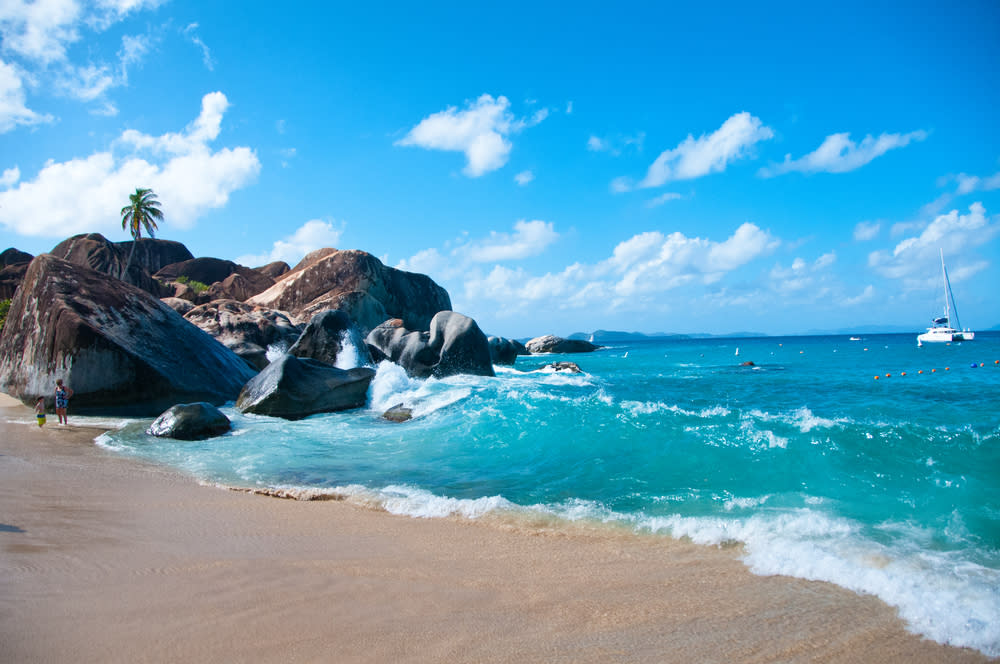More from Tortola
Main Menu
- 00:00
- 06:00
- 12:00
- 18:00
- 23:00
Tortola : Next 24-Hour Weather
Today - 17th December 2025
Sunrise 06:43
Sunset 17:45
Tomorrow - 18th December 2025
Sunrise 06:43
Sunset 17:45
Holiday Weather Now
Sorted by popularity:
Updated at 10:01 GMT
-
Temp feels like29°C84°F
-
Length of day11h 02m
-
Pressure29" (1015 hpa)
-
Visibility16 km (9miles)
-
Wind speed27 km/h
Sunrise 06:43
Sunset 17:45
-
Temp feels like:
29ºC (84 ºF)
-
Length of day:
11h 02m
-
Pressure:
29" (1015 hpa)
-
Visibility:
9 miles (16 km)
-
Wind speed:
27 km/h
Tortola enjoys a maritime tropical climate with high temperatures year round. Rainfall levels are quite low for a tropical location though there are pronounced wet and dry seasons.
Tortola is the largest of the British Virgin Islands which are part of the Lesser Antilles, a string of volcanic islands that curve up from the north coast of Venezuela to Puerto Rico which starts the Greater Antilles. The islands split the Caribbean Sea from the Atlantic Ocean and this position puts them in the Atlantic hurricane belt. Hurricane season lasts from June till November; risk peaks in October and November. Tortola also sits near a fault line and minor earthquakes are common.
Dry Season: January â" July
During the dry season the average high temperature wavers between 28°C and 29°C. The average low temperature gets down to around 21°C for much of the season. The lower humidity of the dry season and the cooling northeast trade winds prevent the heat from becoming oppressive. Sunshine levels increase to eight hours per day at the start of the season and get up to nine in March, April and July. Rainfall is low for the period though as this is a tropical location the odd shower is bound to break every few days. May usually sees a heavier rain than the surrounding dry months and is as wet as the beginning and end of the wet season. The sea does not usually fall below 29°C.
The best time to visit Tortola and the rest of the British Virgin Islands is during the first half of the dry season, from January till April, when temperatures and rainfall are at their lowest.
Wet Season: August â" December
Rainfall increases at the beginning of the season to a peak in October and November. Rain falls on around half of the days in each month. Storms are usually quite heavy but brief leaving plenty of bright, clear weather. The riskier end of the hurricane season falls in the first half of the wet season and any travel to the area should be preceded by a check on hurricane activity. If one passes in the vicinity of Tortola or if conditions are merely close to producing a hurricane, weather conditions on the island can become severe with even heavier rain and furious wind speeds. Predictions are usually accurate and locals are well-prepared on emergency procedure.
The wet season is slightly hotter than the dry season with an average high temperature that gets up to 31°C at its hottest in August and September. The average low temperature gets up to 24°C for much of the season. Increased humidity levels can make the heat quite uncomfortable but the northeast trades still blow a cool breeze. Sunshine levels reduce slightly as the season progresses but even November, which is the greyest month, sees seven hours of sunshine per day on average. The sea temperature peaks in September and October at 29°C.
Regional Variation
As Tortola is a mountainous island there are some regional variations in climatic conditions. The highest parts of the mountains receive cooler temperatures year round. They act as a barrier to the northeast trade winds providing south coast areas with protection. Road Town, the capital, sits on the south side and benefits from slightly lower rainfall. However, the south coast is largely very rugged as the mountains drop straight down into the sea in most places, and it is the north coast that is home to the majority of the famous white sand beaches.

















